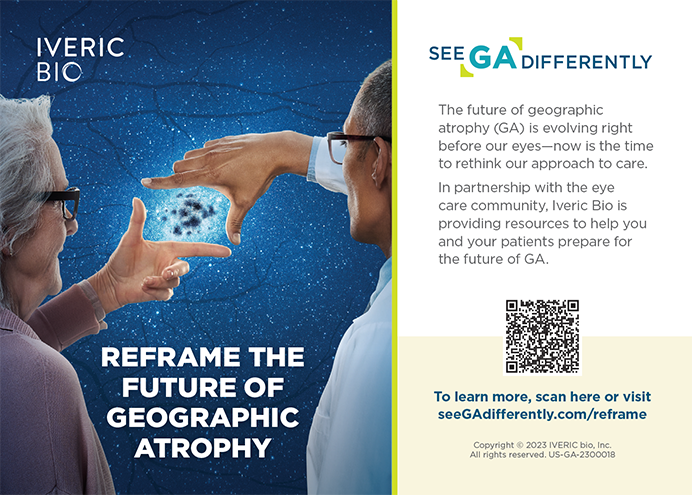Blake K. Williamson, MD, MPH, MS: Microinvasive glaucoma surgery (MIGS) has revolutionized the way ophthalmologists manage glaucoma, as it is no longer necessary to complete a glaucoma fellowship in order to effectively treat patients with new, cutting-edge surgical technologies. In this article, I have a conversation with two of my partners at Williamson Eye about the tools and techniques that are required for a cataract and refractive subspecialist to become a competent MIGS surgeon. My partners Matthew D. Smith, MD, and Blake A. Booth, MD, trained as comprehensive refractive cataract surgeons like myself.
Dr. Williamson: Dr. Smith, what type of MIGS procedures, if any, did we perform when you joined Williamson Eye several years ago?
Matthew D. Smith, MD: Although I came on board as a comprehensively trained ophthalmologist, I had a particular interest in glaucoma. At that point, the only procedures we performed were traditional tube shunt and trabeculectomy surgeries, which are effective but have high complication profiles.
With an increasing number of patients requiring cataract surgery, many of whom have concomitant glaucoma, I realized that the need for surgical treatment of glaucoma could be particularly beneficial to my patients, so I started to investigate the value of MIGS. At that time, the iStent (Glaukos) was the most well-known device, and our medical director, Charles Williamson, MD, was involved in some of the early trials with this technology. After researching its safety and efficacy, I felt that the ability to become more interventional and to treat patients with glaucoma at the time of cataract surgery made for a much more efficient process.
Dr. Williamson: Dr. Booth, you have recently joined our practice. When did you realize that, as a comprehensive cataract surgeon, you needed to adopt MIGS?
Blake A. Booth, MD: I found myself in a situation soon after residency where I was performing a high volume of cataract surgery. A large percentage of these patients also had glaucoma and were being treated with topical medications indefinitely. The impetus to adopt MIGS started with an understanding of the inefficiencies and burdens that our patients live with while on topical medications.
The medications we have available to reduce IOP are great from a pharmacologic standpoint and valuable in their effectiveness, but the tasks of obtaining the medication and using it correctly were a burden on my patients and my practice. When I heard that it may be possible to help patients fight glaucoma with a microinvasive surgical option that reduced medication burden, I took it seriously. This was a place where our practice could add value back to a patient’s life with a short surgical procedure.
Dr. Williamson: What advice would you give a comprehensive cataract surgeon who wants to adopt MIGS procedures in his or her practice? Which patients are the ideal candidates for these procedures?
Dr. Booth: Appropriate patient selection is key to set yourself up for success. Primary open-angle glaucoma patients undergoing cataract surgery are often good candidates for a MIGS procedure. Patients should have a normal angle anatomy in which the trabecular meshwork is visible and clear of significant synechiae and neovascularization or not impeded by a prior surgical procedure.
Some cataract patients have a somewhat narrowed angle, especially if they have a long-standing cataract. In my experience, most of these patients’ angles open and expand upon removal of the cataract, allowing surgical access to the trabecular meshwork. Patients with other causes of chronic open-angle glaucoma such as pigment dispersion syndrome and pseudoexfoliation are often good candidates for canal-based MIGS procedures, as the trabecular meshwork is often the site of aqueous outflow impedance.
Understanding the level of disease severity and the level of IOP control in a patient is essential to choosing the best MIGS procedure. When you are starting out with MIGS, the ideal patient may be the one with mild to moderate disease and moderate to poor IOP control. This would be the patient who is on one to two medications that reduced his or her IOP by only 10% to 30%.
A trabecular microbypass or goniotomy type of procedure would likely benefit this patient by accessing more collector channels and enhancing aqueous outflow.
In patients with advanced disease, there are MIGS options that target outflow pathways other than the conventional outflow path of Schlemm canal. Supraciliary or subconjunctival bleb-based procedures can be useful in these cases. The Xen Gel Stent (Allergan) is a transscleral device requiring postoperative bleb management and the use of mitomycin C. It is effective at maintaining low IOP, reducing medication burden, and reducing the long-term risk of endophthalmitis and postoperative hypotony (see Keys to Appropriate Patient Selection in MIGS).
Dr. Smith: The first advice I would give is to know your angle anatomy. Become as proficient as you can with gonioscopy, both in the clinic and in the OR, because that is how you will perform a majority of MIGS procedures. Even while doing basic cataract procedures, try to practice surgical gonioscopy and head rotation under the microscope at the end of the case to practice viewing the angles and familiarize yourself with the process.
Find a MIGS procedure that you feel fits your surgical technique, read about it, and practice it in a wet lab with the help of your local representative for that device until you are comfortable enough to proceed to the OR. Once you become comfortable, I recommend incorporating a second device so that you are even more equipped to take care of different types of glaucoma patients. As I mentioned, I started with the iStent and have now adopted a few other procedures into my armamentarium, such as goniotomy with the Kahook Dual Blade (New World Medical).
For MIGS, visualization is the biggest key to surgical success. You may have to spend more time positioning the patient in order to have an optimal view of his or her angle. Sometimes, bleeding can obscure your view once you have pierced the trabecular meshwork. In that scenario, I introduce more OVD into the eye to move the blood and obtain a clearer view. After the procedure is completed, if bleeding or oozing is still an issue, I will inject some Shugarcaine (named for Joel Shugar, MD: epinephrine 0.025% and lidocaine 0.75% in fortified balanced saline solution) into the anterior chamber to help constrict the local vasculature, which slows bleeding. This will help to avoid hazy vision and IOP spikes on postoperative day 1.
Two tools that can aid in visualization are a Volk Gonio Lens (Volk Optical) and the iPrism Clip (Glaukos). Although I have not used these myself, my colleagues say they have found these tools beneficial. The Volk Gonio Lens is a dynamic gonioscopy prism that essentially floats on the corneal surface, minimizing applied pressure to allow a clear view of the angle and to prevent corneal striae formation. The iPrism Clip is a disposable attachment to the gonioscopy lens that can also increase stability of the globe during the procedure by using extended protrusions to rest on the eye without distorting the surgeon’s view.
Dr. Booth: I do not routinely use the iPrism Clip, but I have used it, and I thought it was helpful for stabilizing the eye. If there is a problem with the patient’s gaze, this device can be useful.
Dr. Williamson: Dr. Booth, I always try to encourage other surgeons not to have choice paralysis when trying to decide which MIGS procedure to start with. Can you provide insight into which device a new adopter might want to start with when incorporating MIGS procedures?
Dr. Booth: The training and development with iStent that was provided by Glaukos was a great method for me to learn MIGS. There are eye models that several companies make available during wet or dry lab training, which, in my opinion, are very beneficial. During MIGS procedures, the surgeon must simultaneously use an instrument internally and externally; this is what differentiates MIGS from cataract surgery.
New surgeons would benefit from spending time in a dry lab with an eye model and controlling a goniolens externally on the surface of the eye while controlling an instrument inside the eye in order to get comfortable with these types of procedures.
Starting with the iStent, I felt like I was able to learn not only where the trabecular meshwork is, but also how shallow Schlemm canal is and how it looks and feels to slide a device between the trabecular meshwork and the posterior wall of Schlemm canal.
That is the key learning curve and feel developed in canal-based surgeries. That said, our practice recently implemented the iStent inject (Glaukos), which provides an injectable trabecular microbypass device that implants with the push of a button.
The surgeon should consider how the adoption of MIGS will transpire in his or her practice. In my practice, adopting a new MIGS procedure is about a 4- to 6-month endeavor. I spend time learning about the procedure through all types of media, speaking to colleagues to gather real-world opinions, confirming financial viability in the practice, and selecting patients who meet the criteria for beginner cases with that specific procedure.
CONCLUSION
Dr. Williamson: I agree, and I think what makes the most sense is to choose two procedures initially: one MIGS procedure that can be performed only at the time of cataract surgery and one that can be performed in a pseudophakic patient. I believe targeting Schlemm canal and the conventional outflow pathway with these procedures makes sense because of their exceptional safety profiles.
Every cataract surgeon has patients with concomitant glaucoma. MIGS is becoming the gold-standard method to treat properly selected patients in this category. It can be beneficial to you, as well as to your patients, to incorporate MIGS procedures into your practice.
I think it is great that our generation of cataract surgeons will be the one that will stop ignoring glaucoma at the time of phacoemulsification cataract surgery with IOL implantation. I thank my partners for contributing to this article.







